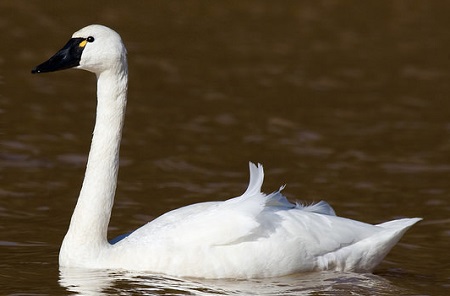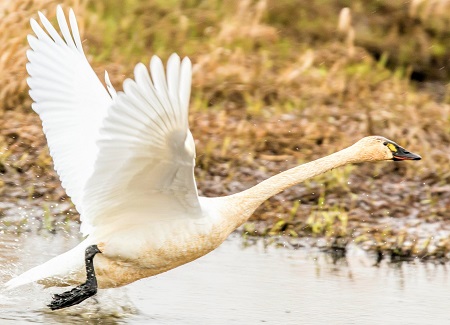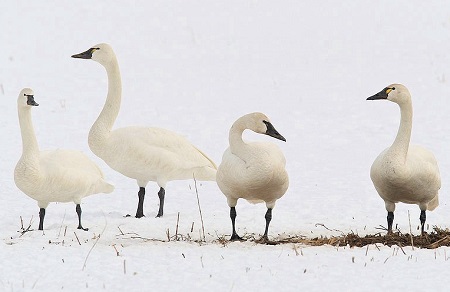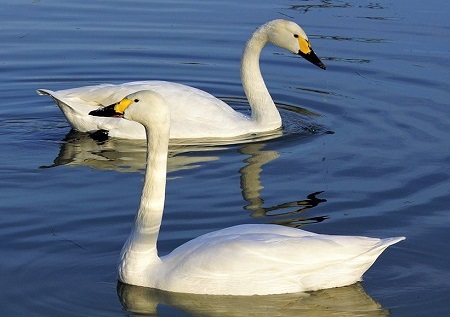Tundra Swan
The Tundra Swan is a small Swan that splits into two subspecies; The Eurasian ‘Bewick’s Swan’ and the ‘Whistling Swan’ of North America. Both subspecies have entirely white plumage, black legs and feet, and a bill that is mostly black. The Whistling swan differs in being a little bit larger and having a thin yellow patch at the base of the bill. While the Bewick’s swan is very similar in appearance to the Whooper Swan but its bill features a small, typically rounded patch of yellow. Whereas in Whooper swans the wedge-shaped patch of yellow extends below the nostril.
The Bewick’s Swan is the smallest swan in Europe. It’s named after the illustrator Thomas Bewick who produced many fine drawings of this species during his lifetime. The Bewick’s swan breeds in the cold Arctic tundra of northern Russia. Usually, birds from the western part of this breeding range migrate to spend their winter months further south in lowland areas of northern Europe from Denmark to France and the British Isles. The eastern population spends the winter in China, Korea and Japan.
The Whistling Swan of North America breeds in the Arctic and migrates many miles to winter in North America’s Atlantic and Pacific coastlines, bays, and lakes. Usually, birds from the eastern population frequents the Chesapeake Bay and North Carolina, while the western population typically winters in California.
During the breeding season, Tundra swan pairs produce 3 – 5 eggs which are incubated for up to 30 days (the Bewick’s Swan) and 30 – 32 days (the Whistling Swan). The cygnets will have fully fledged after a further 40 – 45 days (the Bewick’s Swan) and 60 – 75 days (the Whistling Swan). The fledglings stay with their parents during the first winter and often during their second too, even if the parents have produced a new brood. Tundra Swans do not reach sexual maturity until 3 or 4 years of age.
| Place of origin | Bewick’s Swan: Europe and Asia Whistling Swan: North America |
| Use | Preservation |
| Weight | Bewick’s Swan: Male: 4.9 – 7.8 kg female: 3.4 – 6.4 kg Whistling Swan: Male: 4.7 – 9.6 kg female: 4.3 – 8.2 kg |
| Egg color | Creamy white |





